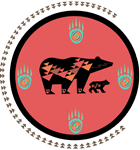|
Randomized controlled trial of a paraprofessional-delivered in-home intervention for young reservation-based American Indian mothers. |


|
Comparative Study
(2009)
|
|
Rebuilding Native American communities. |


|
Journal Article
(2005)
|
|
Reclaiming Our Spirits: Development and Pilot Testing of a Health Promotion Intervention for Indigenous Women Who Have Experienced Intimate Partner Violence. |

|
Journal Article
(2017)
|
|
Science-to-practice: Adapting an evidence based child trauma treatment for American Indian and Alaska native populations. |


|
Journal Article
(2009)
|
|
Screening American Indian Youth for Referral to Drug Abuse Prevention and Intervention Services. |

|
Journal Article
(2006)
|
|
Social Work with Native People: Orienting Child Welfare Workers to the Beliefs, Values, and Practices of Native American Families and Children. |
|
Article
(2008)
|
|
Spiritual Assessment and Native Americans: Establishing the Social Validity of a Complementary Set of Assessment Tools. |

|
Article
(2011)
|
|
Substance abuse and spirituality: A program for Native American students. |
|
Journal Article
(1997)
|
|
Systematic review of interventions focusing on Indigenous adolescent mental health and substance use. |
|
Journal Article
(2015)
|
|
Systems of mental health care for American Indian and Alaska Native children and adolescents. |


|
Chapter
(2011)
|
|
Testing the efficacy of a brief sexual risk reduction intervention among high-risk American Indian adults: study protocol for a randomized controlled trial. |

|
journal article
(2016)
|
|
The Family Spirit Trial for American Indian Teen Mothers and Their Children: CBPR Rationale, Design, Methods and Baseline Characteristics. |


|
Article
(2012)
|
|
The family wellness warriors initiative. |
|
Journal Article
(2007)
|
|
The HAWK2 program: A computer-based drug prevention intervention for native American youth. |
|
Journal Article
(2012)
|
|
The Multicultural Wellbriety Peer Recovery Support Program: Two Decades of Community-Based Recovery. |
|
Article
(2010)
|
|
The Native American healing experience. |
|
Journal Article
(2008)
|
|
The Native Telehealth Outreach and Technical Assistance Program: A community based approach to the development of multimedia-focused health care information. |
|
Journal Article
(2007)
|
|
The Tools to Understand: Community as Co-Researcher on Culture-Specific Protective Factors for Alaska Natives. |


|
Journal Article
(2006)
|
|
The transgenerational trauma and resilience genogram. |


|
Journal Article
(2013)
|
|
The Value of Lakota Traditional Healing for Youth Resiliency and Family Functioning. |


|
Article
(2016)
|
|
The Zuni Life Skills Development Program: a school/community-based suicide prevention intervention. |
|
Journal Article
(2008)
|
|
Translating and Implementing a Mindfulness-Based Youth Suicide Prevention Intervention in a Native American Community. |

|
Article
(2015)
|
|
Universal prevention program outcomes: Safe Schools Healthy Students in a rural, multicultural setting. |
|
Journal Article
(2007)
|
|
Use of evidence-based treatments in substance abuse treatment programs serving American Indian and Alaska Native communities. |
|
Journal Article
(2016)
|
|
Utilizing spiritual ecograms with Native American families and children to promote cultural competence in family therapy. |


|
Journal Article
(2011)
|




